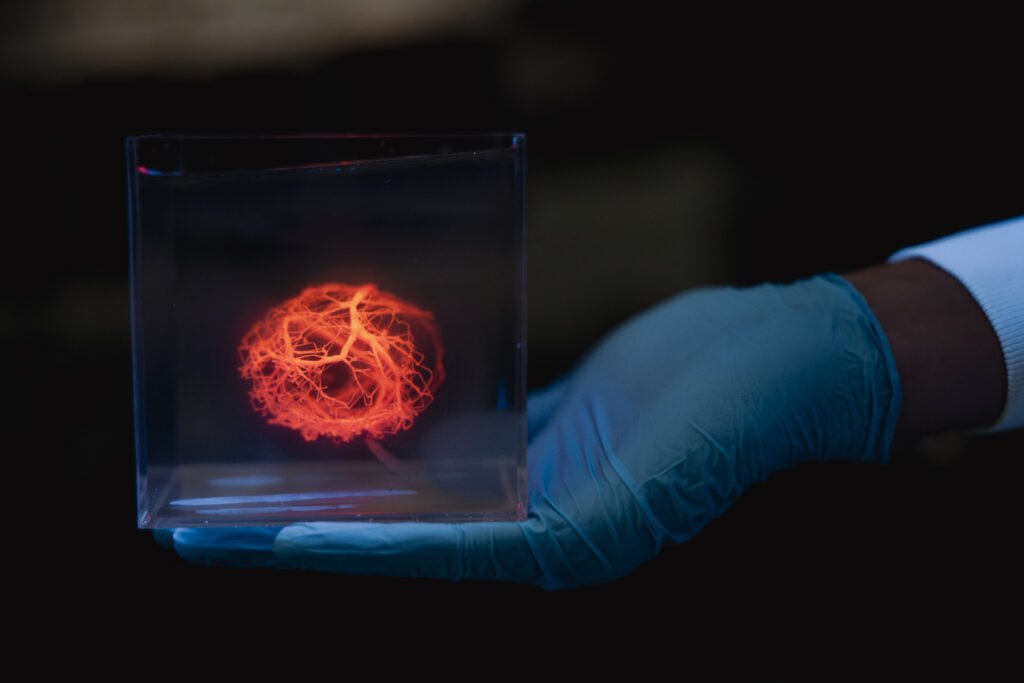Researchers at Stanford University have developed a groundbreaking algorithm that significantly accelerates the design of vascular systems for 3D-printed hearts. The ability to fabricate personalized organs using a patient’s own cells has long been a goal in regenerative medicine, but ensuring proper blood flow within these artificial structures has remained a major challenge. The new algorithm generates vascular trees that closely mimic natural blood vessel architectures, making it possible to create complex networks that efficiently distribute oxygen and nutrients throughout the organ.
The algorithm, which runs 200 times faster than previous methods, enables researchers to model realistic vascular networks in just a few hours rather than months. By incorporating fluid dynamics simulations, the system ensures that blood vessels are evenly distributed and do not collide, creating a closed-loop network with a single entrance and exit. This advancement is expected to significantly improve the viability of bioprinted tissues, paving the way for fully functional, transplantable organs.
Stanford has made the software available through its SimVascular open-source project, allowing other researchers to leverage the technology for their own work. The study was published in Science and represents a major step toward scalable, patient-specific organ fabrication.
More info: SimVascular Project Page
Article from Stanford University: Designing blood vessels for 3D printed hearts
Abstract from Science: Rapid model-guided design of organ-scale synthetic vasculature for biomanufacturing

